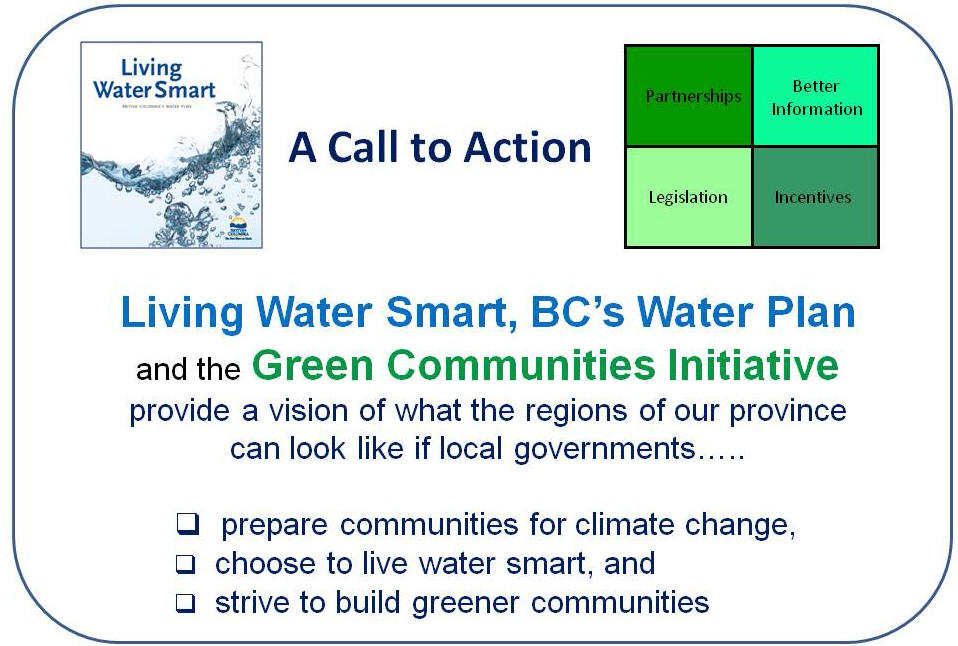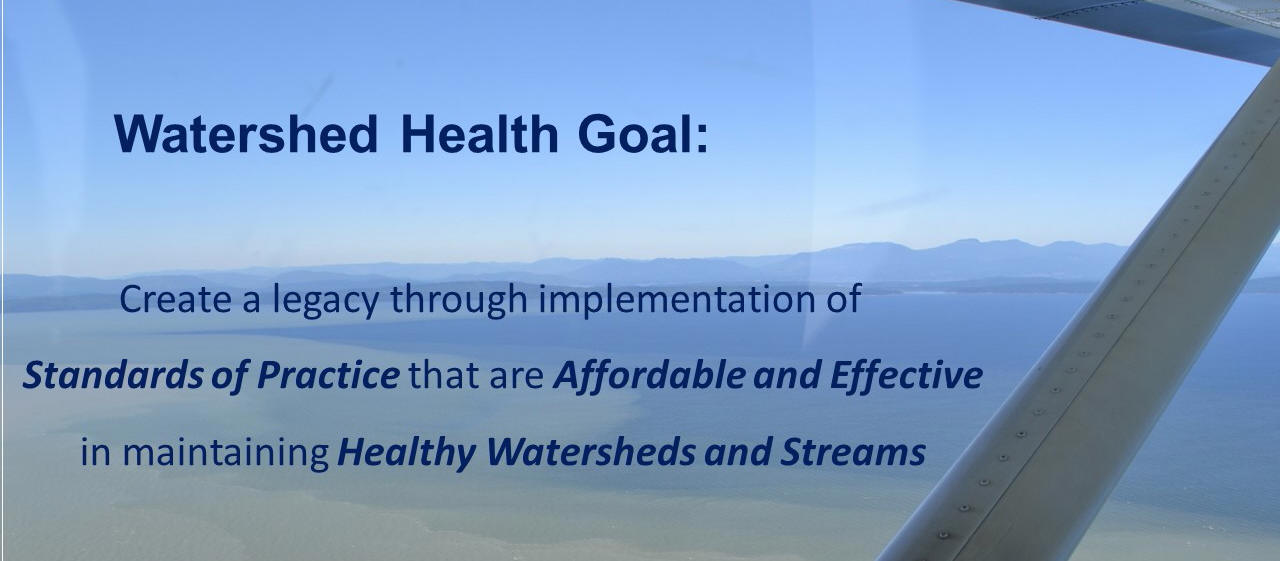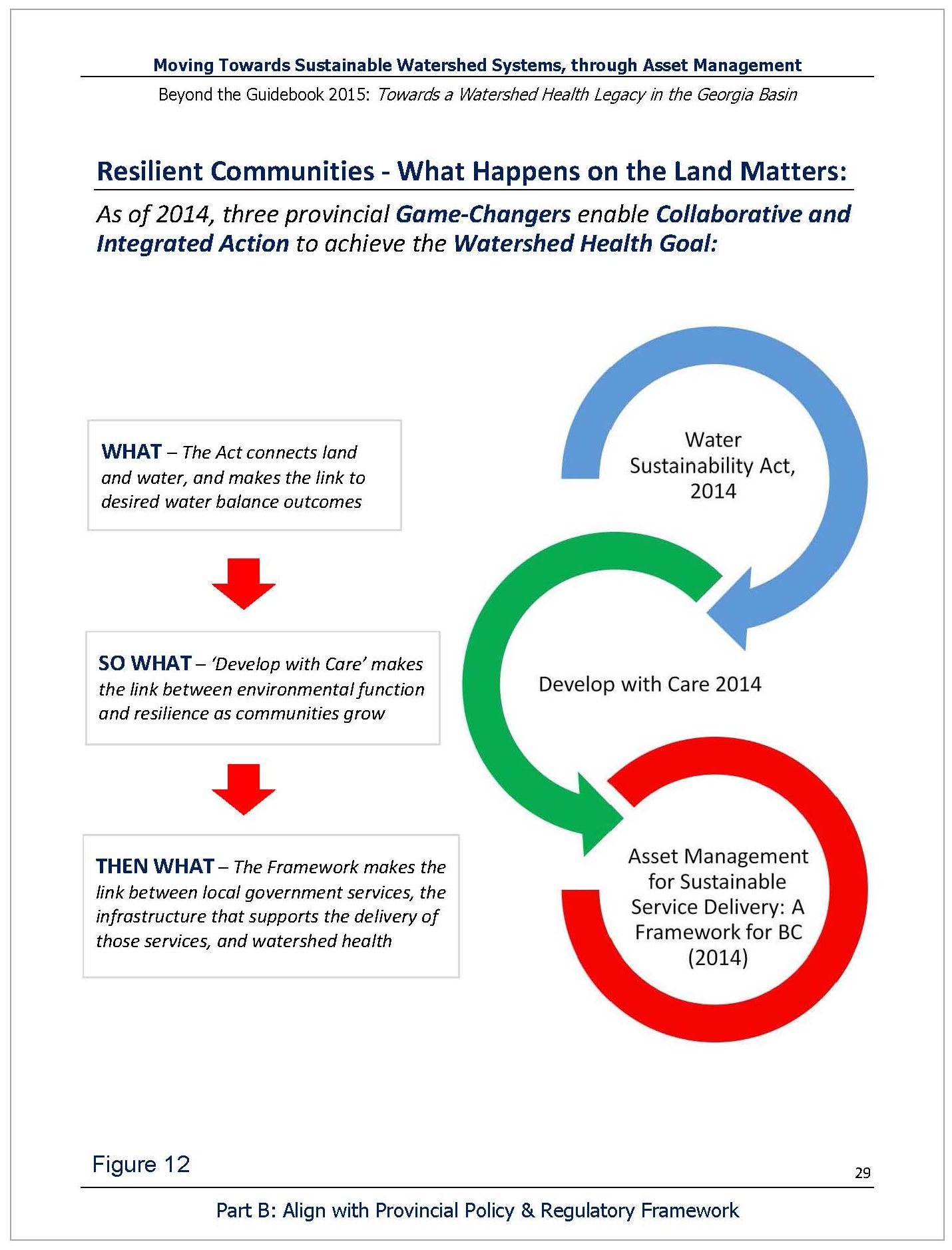Towards Watershed Sustainability: Three landmark game-changers adopted by Province in 2014 enable watershed-based action in BC (Beyond the Guidebook 2015)
Note to Reader:
Drought, forest fires and floods in 2003 created a ‘teachable year’ for change. This led to the Water Sustainability Action Plan for BC, released in February 2004. Action Plan success helped to lay the groundwork for the Living Water Smart and Green Communities initiatives in 2008. The 2008 ‘call to action’ resulted in three landmark initiatives. These came to fruition in 2014.
The article below is extracted from Part B of Beyond the Guidebook 2015. Part B is titled Align with Provincial Policy & Regulatory Framework. To download a PDF copy of the 2-page extract, click on 2014 Game-Changers.
Game-Changers Enable Action (2014)
Doing business differently and making a difference is a building blocks process. Understanding expands and becomes clearer over time. The foundation for integrated action that connects land and water has been constructed over the past half-century. The three recent milestone years are:
- 2003 – The Teachable Year
- 2008 – Call to Action
- 2014 – Game-Changers Enable Action
Accepted ‘standards of practice’- especially those for engineering, planning and finance – influence the form and function of the Built Environment. The goal of shifting to an ecologically functioning and resilient baseline and creating a watershed health legacy will ultimately depend on implementing ‘Design with Nature’ standards of practice.
Springboard to Implementation
It has taken a decade to move from the ‘teachable year’ to a point where the policy, regulatory and program framework is in place and enables implementation of watershed-based solutions.
As of 2014, three game-changers (scroll down to Figure 12 from Beyond the Guidebook 2015; and click on the image to download a PDF copy) provide the springboard for collaborative action to achieve the Watershed Health Goal. Integration and coordination of the three will maximize their joint effectiveness and the part each can play over time in building Green Communities that are resilient.
Environmentally Adaptive Approach
A guiding principle for collaboration is to leverage ‘science-based understanding’ of the relationship between land use changes and resulting stream health (and also financial liability) consequences – and thereby influence community planning by means of an environmentally adaptive approach.
Coordinated & Integrated
Opportunities abound to couple the three game-changers with other elements of the existing policy, regulatory and program framework – such as Liquid Waste Management Plans (LWMPs) and the Climate Leadership Plan – to achieve the Watershed Health Goal.
Liquid Waste Management Plans
The rainwater component of an LWMP is a potentially powerful regulatory and planning tool. It can influence other local government processes for the better. When fully integrated with land use and (re)development processes, the rainwater component of an LWMP can generate the blueprint for coordinated action at a watershed scale, one property at a time.
Climate Leadership Plan
The process for developing BC’s Climate Leadership Plan was announced in April 2015. The anticipated release of the plan is March 2016. The plan will include recommendations on how to further the Province’s collaboration with local governments within the context of mutually-beneficial climate actions.
Climate Action
 “Adaptation is local in application. The Province has developed information and tools to support practitioners and decision makers to take action at a local level. Sharing of knowledge and experience through ‘organic collaboration’ is also vital because peer-to-peer learning is what practitioners respect most,” states Thomas White, Manager, Climate Risk Management, Climate Action Secretariat (Ministry of Environment).
“Adaptation is local in application. The Province has developed information and tools to support practitioners and decision makers to take action at a local level. Sharing of knowledge and experience through ‘organic collaboration’ is also vital because peer-to-peer learning is what practitioners respect most,” states Thomas White, Manager, Climate Risk Management, Climate Action Secretariat (Ministry of Environment).




